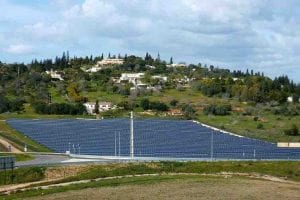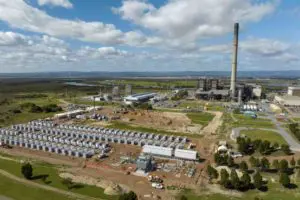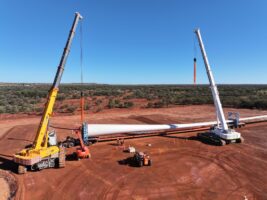Close on the heels of its last funding success, Australian listed wave power company Carnegie Clean Energy has secured another €1.2 million ($A1.9 million) to push its Spanish plans forward.
The once-troubled wave power promoter won the money through Renmarinas Demos, the Spanish government’s marine renewable energy funding program.
Spain wants 40 to 60 megawatts of ocean energy – wave and tidal – deployed by 2030.
Earlier this month, Carnegie beat 35 other companies in a EuropeWave tender to build a roughly 400kW version of its CETO wave energy converter in waters off the Basque Country.
At the time Carnegie CEO Jonathan Fiévez said their competitive advantages in the tender, which took two years, were across a range of key technical criteria including cost (LCOE), performance, reliability, availability and survivability.
The EU program, designed to support the European Commission’s goals of 100MW ocean power by 2025 and 1GW by 2030, came with a $6.3 million grant.
Carnegie’s plan is to have the Aguamarina project running by 2025.
The initial funding gave Carnegie’s local subsidiary a one year stint with wave energy support organisation Biscay Marine Energy Platform (BiMEP); the latest funding extends that by another year.
Long time coming
The CETO technology was first invented in Perth in 1975 and uses a submerged, buoy-like device tethered to the seabed that oscillates with the waves and converts the waves’ energy into electricity.
Fiévez is grateful for the extra support from the Spanish government to commercialise the technology, after years spent developing the CETO concept.
“We see the longer operational window and additional collaboration with BiMEP creating additional opportunities to not only improve CETO and de-risk the activities but also to contribute more broadly to the marine energy sector, especially in Spain,” he says.
“We’re already underway with the Achieve project but we’ll continue to seek ways to ensure the core project delivers more value through enhancement and extension.
“What our team is achieving with this technology and the pathway toward commercialisation is now being recognised internationally. This award is yet another validation of what we’re developing and how it can be applied to achieve the target of a clean energy future.”
He recently told RenewEconomy that the company’s focus is in Europe, given the substantial support for ocean energy there.
Outplay, outlast
It’s been a hard, and long, road to take the CETO technology to potential commercialisation since it started being tested in the 1990s.
Some complicated corporate manoeuvres in the early 2000s saw Carnegie take full ownership in 2008, with promises of 1.5 gigawatts (GW) of wave energy powering 1.2 million Australian homes by 2020, and 12 GW by 2050.
The company made its only real-world deployment of its CETO wave energy units in 2014, off Garden Island, near Perth. The three 240kW units were a test run for the full size 1MW CETO 6 units.
The company went into voluntary administration in 2019 after the WA government nixed a $16 million contract it had signed with the home-grown company to build the CETO 6 wave farm off the coast of Albany.
Long-time CEO Michael Ottaviano left, and was replaced by Fiévez.
But after outliving rivals such as Oceanlinx and BioPower Systems, the time may be nigh for Carnegie’s vision of sea power to finally come of age.
Today, Perth-born Bombora is targeting the UK for its wave tech, which was invented in 2012. Tasmania-founded Wave Swell finished a trial in the Bass Strait this year of its tidal power technology, from a 1,000-tonne generator in Tasmania’s Port of Bell Bay near King Island that uses an artificial blowhole to generate power.
It, too, is looking to Europe for its next steps.
Carnegie says despite its focus on Europe, its headquarters will remain in Fremantle as it works on a new technology called MoorPower.
It uses a Power Take-Off (PTO) system that converts the orbital motion of waves into electricity, but rather than using a stand-alone buoy system, the scaled down technology will be designed to be integrated with moored offshore vessels.










